Stop overbuying fresh herbs only to watch them spoil in the fridge. Instead, get an indoor herb garden and grow your own.
Our editors and experts handpick every product we feature. We may earn a commission from your purchases.Learn more.
Stop overbuying fresh herbs only to watch them spoil in the fridge. Instead, get an indoor herb garden and grow your own.
Our editors and experts handpick every product we feature. We may earn a commission from your purchases.Learn more.
 via amazon.com
via amazon.com
Plant a garden of your favorite herbs in this indoor planter and label the fruits of your labor accordingly on built-in chalkboard panels. The wood and metal mix makes a perfectly rustic herb planter for your indoor herbs!
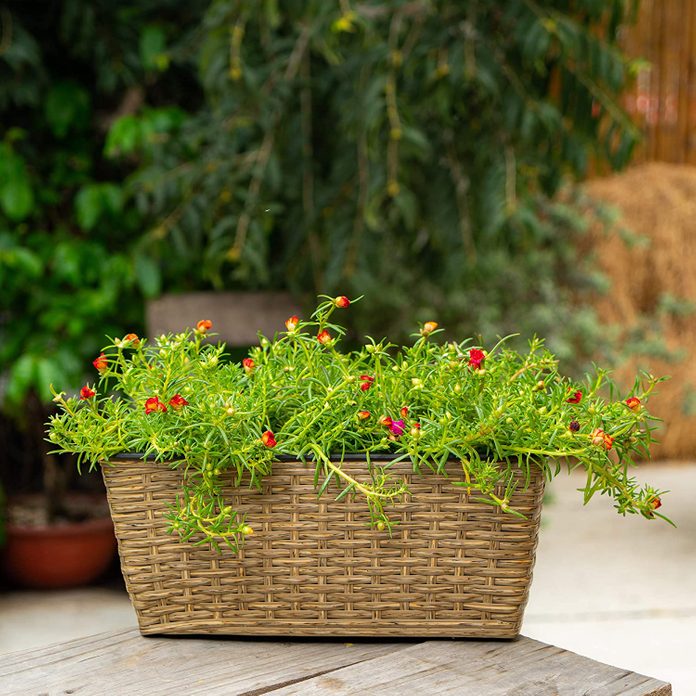 via amazon.com
via amazon.com
This rectangular woven wicker planter comes with a sub-irrigation system to keep your indoor herb garden hydrated even when you’re away. Align it with a wall or window, or set it on a table as a centerpiece. Fragrant herbs like basil add ambiance to any meal. This versatile beauty is even suitable for use outside.
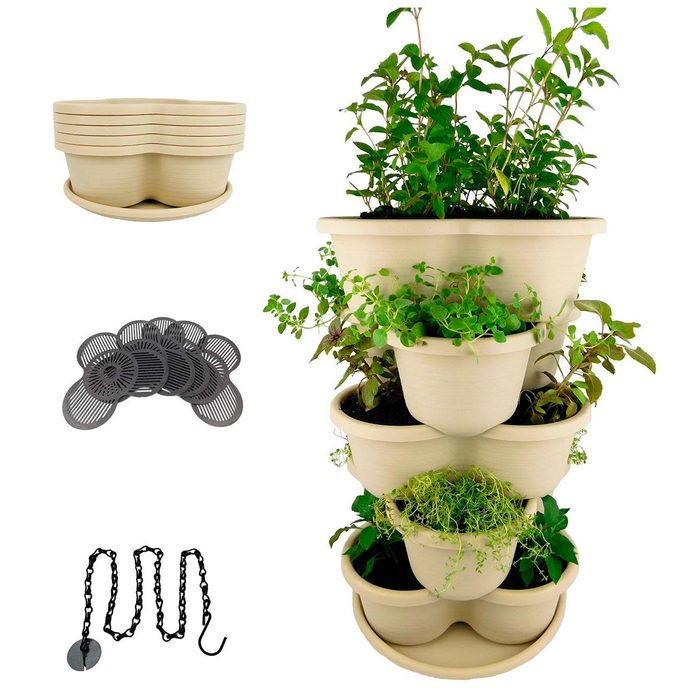 Amazing Creation
Amazing Creation
One of the key principles for maintaining an orderly home is taking advantage of vertical space, and these indoor herb pots do just that. Five staggered, stackable polypropylene indoor herb pots hold up to 15 herbs. They come with built-in drainage allowing for a trickle-down self-watering design.
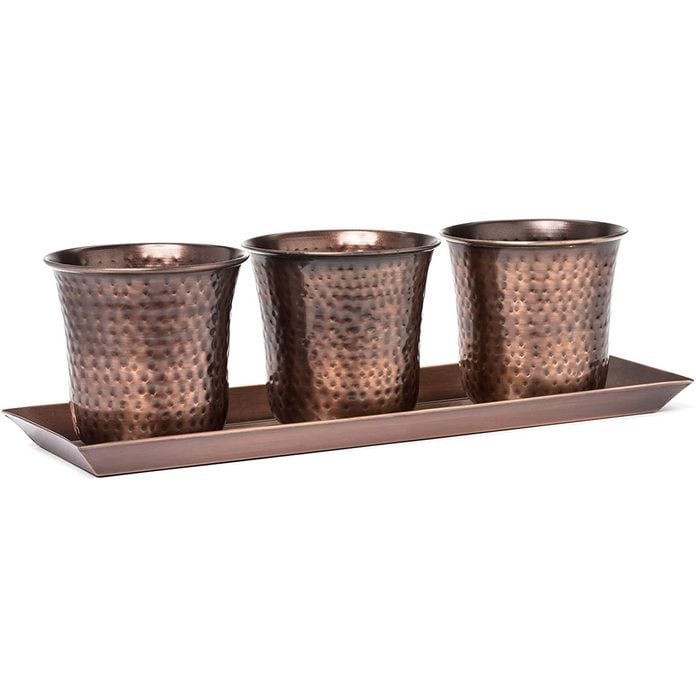 via amazon.com
via amazon.com
This antique copper trio is the perfect size for a windowsill herb garden. The hand hammered, stainless steel pots have a gorgeous copper finish and make for an adorable indoor herb garden for growers who love a handcrafted look. This also makes a great housewarming gift!
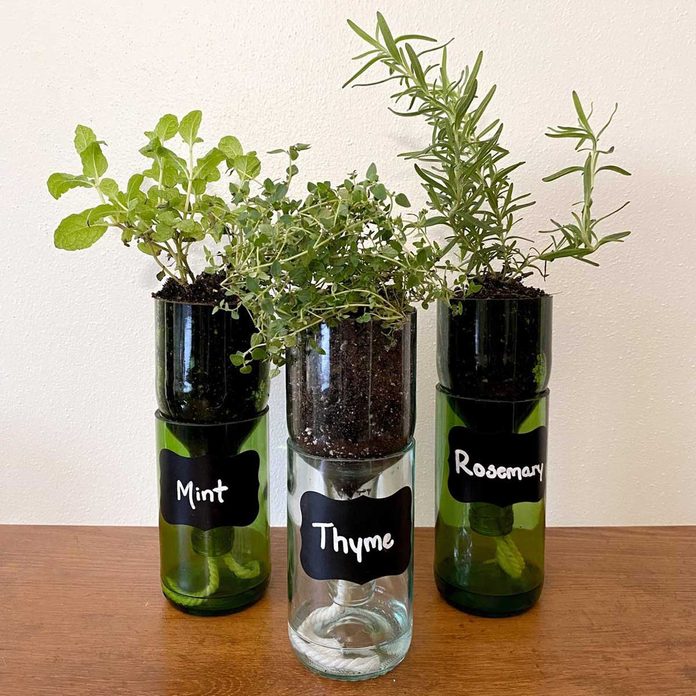 via etsy.com
via etsy.com
This upcycled indoor herb garden not only reuses wine bottles, but each comes with a self-watering cotton wick, a mesh liner and a chalkboard label. These recycled planters are available in green and clear.
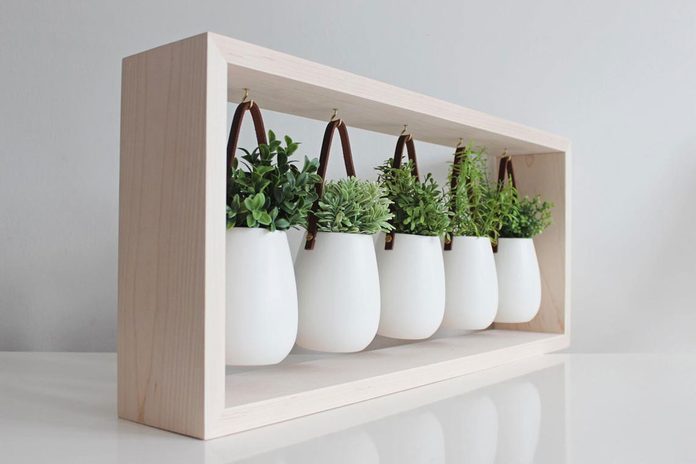 via etsy.com
via etsy.com
Made of wood, ceramic and leather, this sweet modern indoor herb garden features hanging pots that resemble air plants. It works as a standalone unit but can also be mounted to the wall.
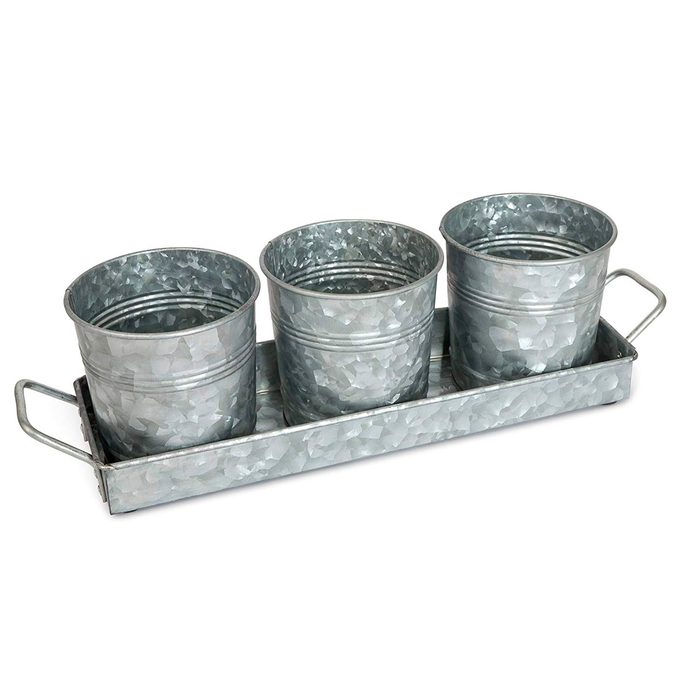 Walford Home
Walford Home
If farmhouse chic is the look you’re after, look no further than this indoor herb garden made of hammered, galvanized steel. The trio of textured indoor herb pots come in a matching drainage tray with protective pads on the underside. Galvanized steel is weather-resistant, so this planter can withstand outdoor use, too.
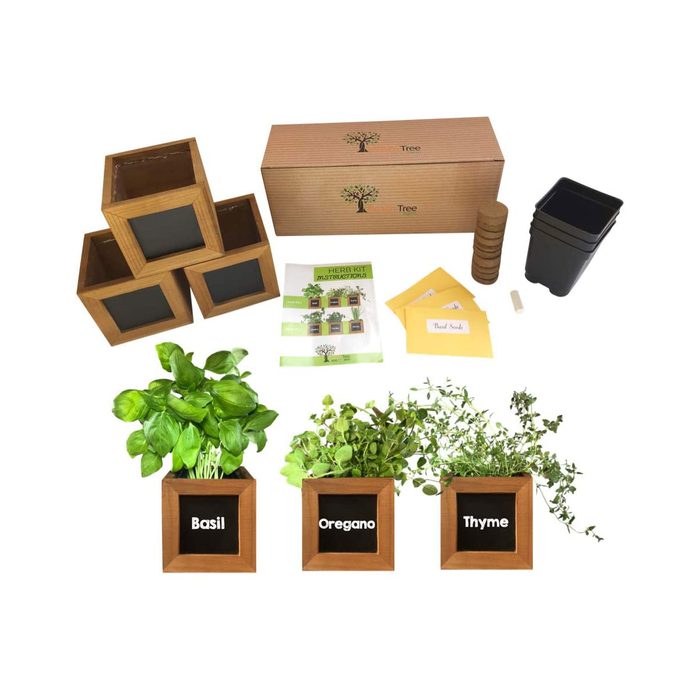 via amazon.com
via amazon.com
This set of three wood mini planters is just right for a small indoor garden. It comes with your choice of three herb seeds and nutrient enriched expandable soil pellets. The chalkboard labels let you keep track of which seeds are planted in each box. Choose between two seed mixtures: basil, oregano and thyme or cilantro, parsley and chives.
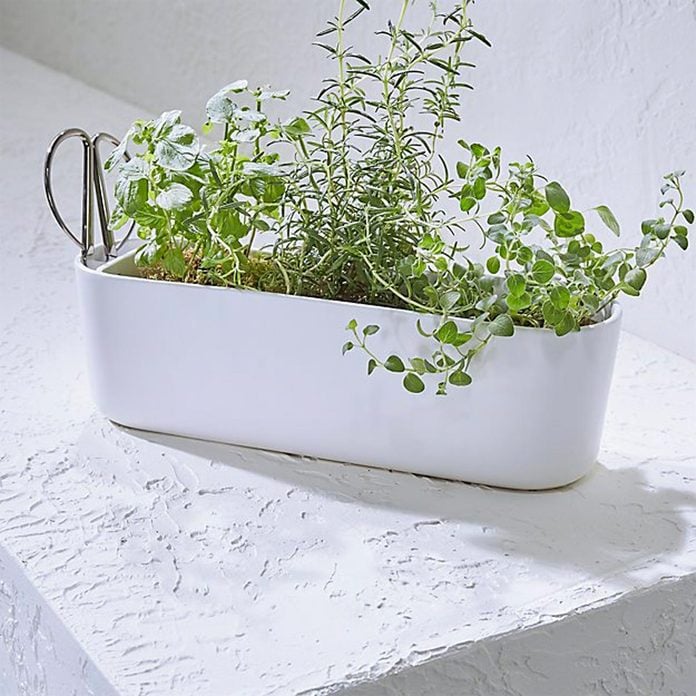 Crate&Barrel
Crate&Barrel
As the name implies, this white ceramic trough-style planter comes with a pair of scissors for snipping herbs, and a handy built-in holder for the shears. The indoor herb garden is build to sit on your windowsill. It has room to grow as many as four herbs. Here are more ideas and inspirations for your indoor herb garden.
 via amazon.com
via amazon.com
This coated metal, farmhouse-inspired indoor herb garden comes in black, coral, blue, teal, turquoise and white. A matching tray with a handle on each side offers an unexpectedly rustic touch to the garden. This herb planter can be used indoors or outdoors for growing patio garden herbs.
Space requirements are key factors to consider when choosing an indoor herb garden planter. The planter must fit easily within your available space, whether a windowsill, countertop or a dedicated indoor garden area. Depending on your needs, you can opt for several size options.
Also, consider depth. Herbs need enough space for their roots to survive, so choose a planter that allows your herbs to grow without becoming root-bound.
Herb planters are available in various materials, each offering their own unique benefits:
All planters need proper drainage. Otherwise, your plants risk being overwatered and having nowhere to go for that excess water, eventually leading to root rot and an herb graveyard.
Planters with drainage holes help keep the soil aerated and provide a place for excess water to escape. If your planter doesn’t have a hole in the bottom, consider adding a layer of large stones or gravel to improve water flow. It’s also important to use well-draining soil to maintain the correct moisture balance for your herbs.
Of course, a drainage hole at the bottom of a planter inside your house can get messy, so make sure you have a saucer or a tray underneath to catch the water. You can simply empty that out the day after you’ve watered.
Speaking about companion planting and the types of herbs we can grow, Espiritu says, “There aren’t many hard and fast rules about what herbs pair well together.”
A general aspect to consider is the growth habits of the herb you’re growing. If you love cooking with basil at home, it’s a good idea to give your basil plant its own spacious planter to grow into a lush and robust plant.
Self-watering planters are another great option for indoor herb gardening, especially if you sometimes forget to water your plants. These planters have a reservoir at the bottom to store the water, allowing the plants to drink whenever needed. This helps maintain consistent soil moisture and reduces the risk of over- or under-watering.
When selecting an indoor herb garden planter, UV resistance is an important consideration (especially if placing the planter near a sunny window). UV-resistant planters are designed to withstand prolonged exposure to sunlight without fading, cracking, or degrading, ensuring long-term durability and ensuring the planter still looks good several years later.
When shopping for an indoor herb garden, it’s important to weigh the cost against the quality and the features that matter most to you. A higher upfront cost may be worth it if it includes features that enhance your experience, like improved drainage, sturdier construction or a design that complements your home decor.
Ultimately, the best value comes from a planter that does what you need, falls within your budget, and lasts a decent amount of time.
Kristine Solomon tapped into her more than two decades of experience as an editor, writer, and site director for several publications, including Martha Stewart Living, Real Simple and Yahoo Life. Her topics of expertise include home, travel and lifestyle.
We also consulted Kevin Espiritu, founder and CEO of Epic Gardening. As a self-taught gardener, Espiritu has spent over a decade producing educational gardening content across social media, the Epic Gardening podcast and a blog. He’s also authored two gardening books on urban gardening and grow bag gardening.
Paul Rankin, Content Updates Editor at Family Handyman, updated and contributed research to this piece. Paul has worked in the home and garden industry since 2019.
We considered dozens of options to create our top picks for herb garden planters, spanning a range of materials and designs to suit almost any home decor style. We included multiple size options for compact planters to sit on a windowsill and larger options to support multiple herbs. We sought advice from gardening experts to ensure we included only the best options for helping herbs thrive indoors, especially regarding drainage. Several of our picks have flexible drainage options, depending on your herb of choice.
The best planters for herbs include terracotta for breathability, self-watering for consistent moisture, ceramic for retention, fabric for air pruning, plastic for affordability and ease and wooden for natural insulation. Choose based on your space, needs and herb types.
There really isn’t a hard rule for this. In general, harder, more woody herbs like rosemary tend to grow quite large, so it’s a good idea to give them their own space. Most other herbs are happy to coexist in the same pot.
It’s also a good idea to keep mint in a separate pot because it spreads quickly and overwhelms its neighbor.
For most herbs, a 6- or 12-inch deep planter is plenty of room to grow. You may wish to keep herbs like rosemary or mint in a deeper pot since these tend to get bushy and create extensive root systems.
A thyme, oregano and sage trio is a classic option; they all prefer similar conditions. Another good combination is basil, parsley and chives; they all thrive in full sun and well-draining soil. In general, you can look at your favorite herbs’ water and sunlight requirements and match them together in the same pot.